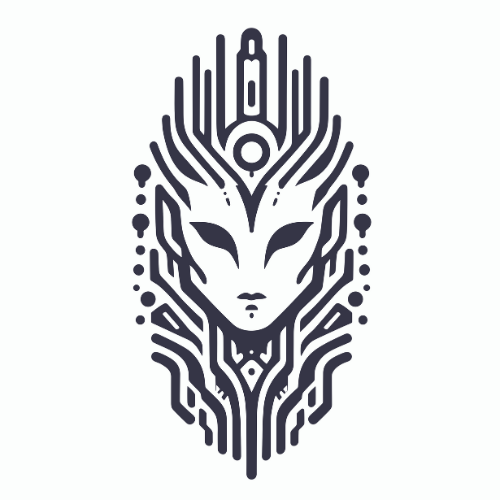AI tools like Midjourney are revolutionizing book cover design by making stunning and unique covers more accessible than ever.
But mastering this powerful technology takes knowledge, practice and persistence. In this comprehensive guide, we provide a step-by-step walkthrough for creating book covers with Midjourney AI.
We will show you how to create book covers like this with just a few clicks:

Why Use Midjourney for Your Book Cover?
Before diving into the how-to, let’s look at the key benefits of using AI for your cover design:
- Access limitless creativity – Midjourney can visualize scenes and concepts impossible to create manually. Its AI model remixes elements from millions of images to generate new visuals.
- Save time and money – You don’t need to hire designers or illustrators. Midjourney can create professional book covers with simple text prompts.
- Experiment easily – Iterate through creative options quickly by tweaking prompts. Traditional design requires creating each option individually.
- Stand out with unique covers – AI-generated art has a distinct style perfect for genres like fantasy or sci-fi wanting non-generic covers.
- Retain creative control – You direct the process by conceptualizing and describing your ideal cover to Midjourney through prompts.
For indie authors and publishers wanting custom covers that capture their book’s essence for an affordable price, Midjourney is very promising. Let’s now dive into using it.
Table of Contents
Be sure to read the entire article, I will show you a much more effective method tool for creating AI book covers using DALL•E 3.
Step 1 – Sign Up for Midjourney Access
Midjourney is currently in closed beta, so first you’ll need access. The signup process is simple:
- Join the Midjourney Discord server. This is where you’ll interact with Midjourney.
- Link your Discord account to Patreon and become a Midjourney patron. The $10 tier provides basic access.
- Wait for Midjourney team to review your access request and grant you beta access.
Midjourney has a free trial that includes 25 free image generations. Once you have used your 25 generations, you must sign up for one of Midjourney’s paid plans.
Once granted access, you can start experimenting with creating images!
Step 2 – Understand Midjourney Prompts
Midjourney creates images from text prompts you provide it. Mastering prompts is key to generating your desired book cover.
Here are prompt writing tips:
- Focus on relevant details – genre, title, themes, colors, objects etc. This provides clear direction.
- Use vivid descriptive language so Midjourney can visualize precisely.
- Try different angles/styles by prompting in various ways.
- Be consistent with character/object names across prompts for continuity.
- Use simple language. Avoid complex sentences and syntax.
- Start broad, then add more details to refine. Too many details can constrain Midjourney.
- Provide context to set the overall scene if needed. This anchors the key elements.
Let’s see some prompt examples for a fantasy cover:
Broad: “An ominous dragon flying over a mystical landscape”
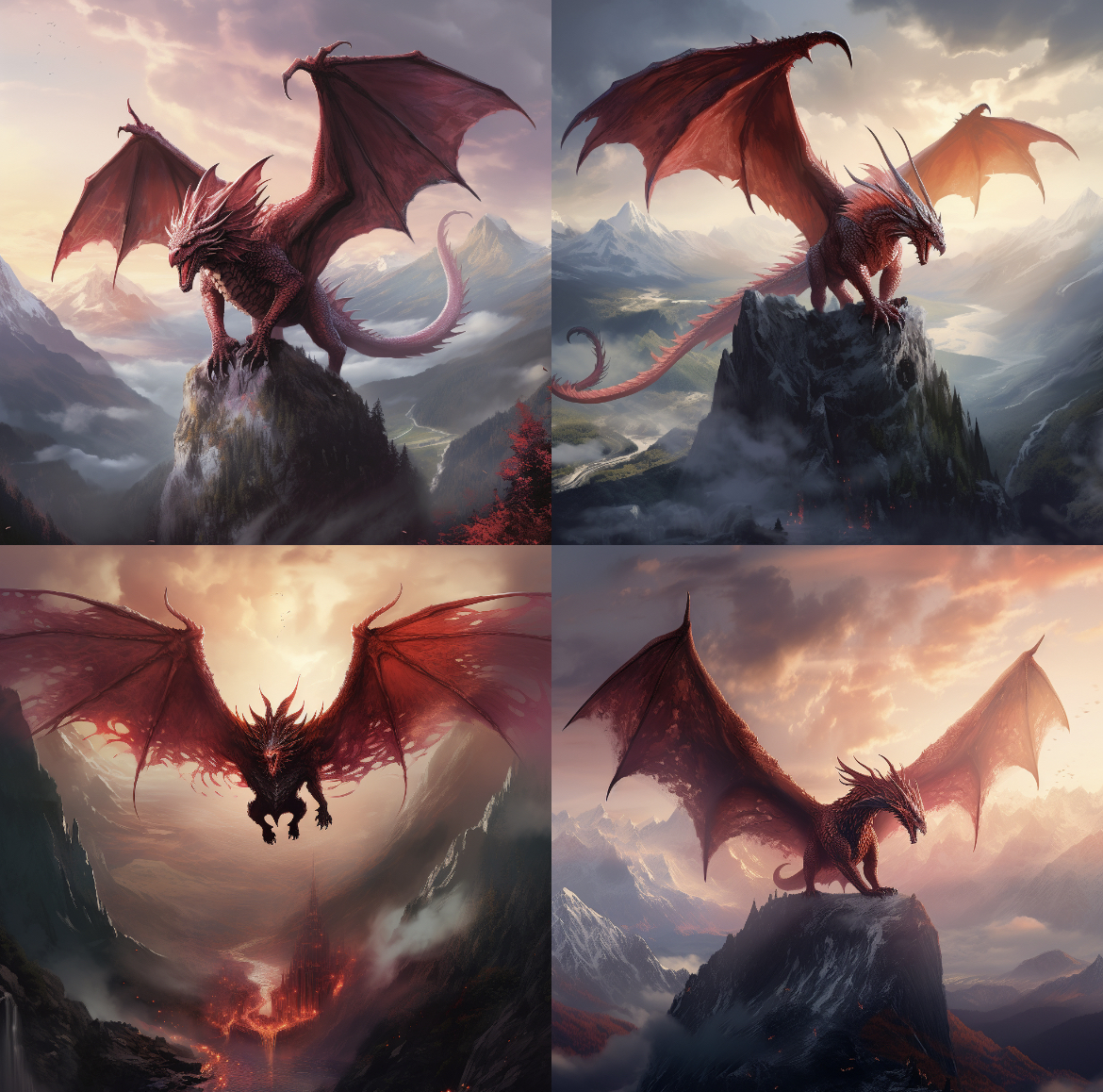
More detail: “A large red dragon with giant wings soaring over mountains wreathed in mist, fantasy book cover”
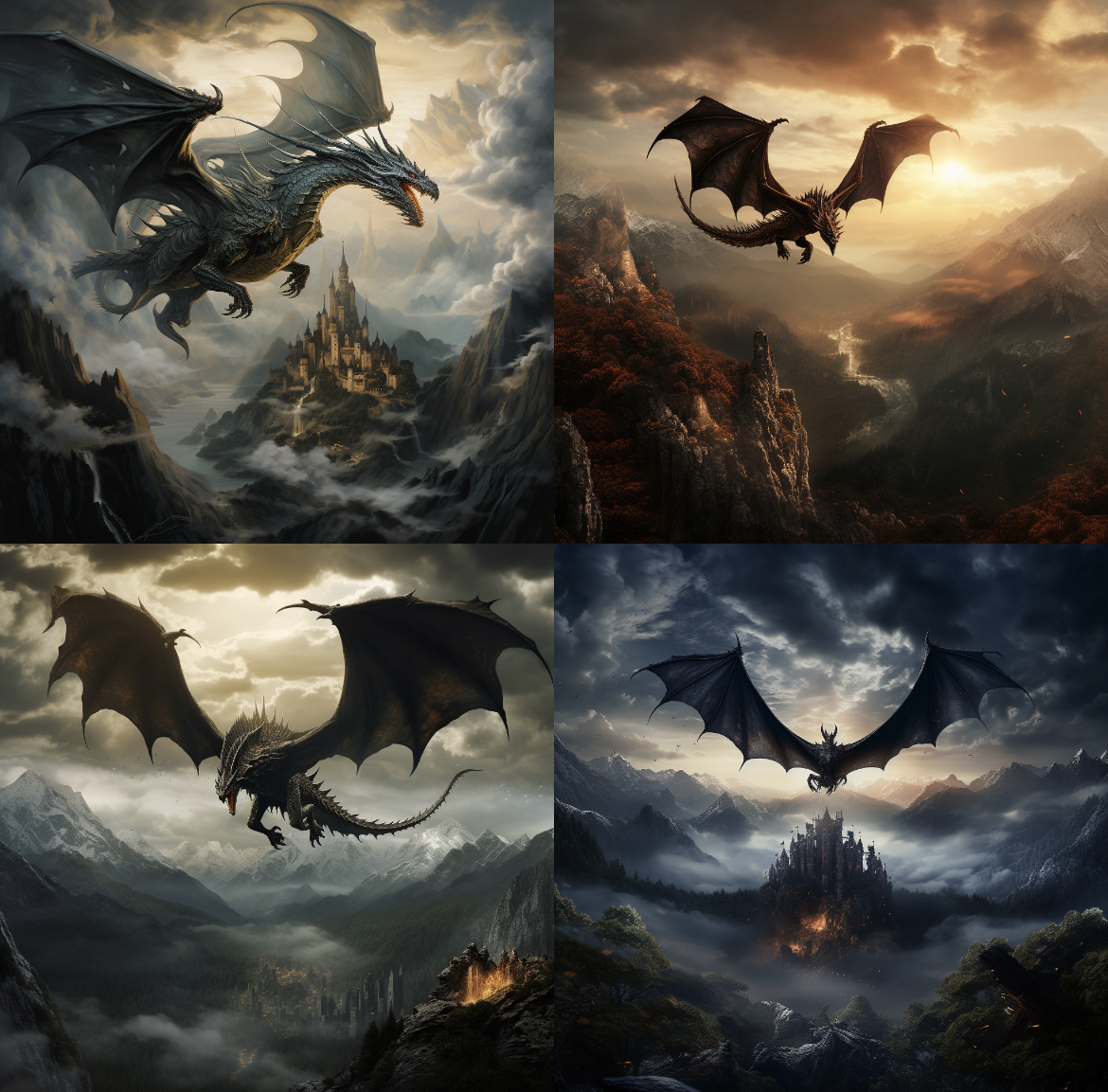
Scene context: “Lightning strikes over a medieval village near a mountain where a red dragon is landing, fantasy book cover”

You will notice that providing more detail and scene context does not always result in a “better” book cover design. Sometimes using a broad prompt.
10 Prompt Ideas For Creating Book Covers With Midjourney
*Be sure to include the term “fantasy book cover” or “Mystery Book Cover” at the beginning of your prompt.
- Epic Fantasy Adventure: “An ancient, mystical forest with a hidden castle, glowing with magical lights. Majestic creatures like dragons and unicorns roaming in the background.”
- Science Fiction Thriller: “A futuristic cityscape at night, neon lights, flying cars, and a mysterious figure in a trench coat standing in the foreground, overlooking the city.”
- Romantic Drama: “A beautiful sunset on a secluded beach, with a silhouette of a couple holding hands. Gentle waves and a soft, romantic atmosphere.”
- Historical Fiction: “A lavish 18th-century ballroom scene, with characters in period costumes dancing. Intricate details on the clothing and architecture, conveying a sense of opulence and drama.”
- Mystery Novel: “A dimly lit Victorian street, foggy and mysterious, with a shadowy figure holding a lantern, partially obscured. Hints of a hidden secret or a mystery to be solved.”
- Horror Story: “An eerie, abandoned house on a hill during a full moon night. Bare trees, crows, and a sense of foreboding.”
- Young Adult Dystopia: “A gritty, post-apocalyptic urban landscape, with a group of young rebels in the foreground, determined and ready for action.”
- Children’s Fantasy: “A colorful, whimsical world filled with talking animals, magical plants, and a bright, inviting castle in the distance.”
- Biography: “A thoughtful portrait of the subject, with meaningful objects or scenes related to their life in the background, conveying depth and emotion.”
- Self-Help/Motivational: “A serene, inspiring natural landscape, like a mountain peak at sunrise or a peaceful lake, with a clear path or journey motif.”
Step 3 – Craft Your Initial Prompts
Now it’s time to conceptualize your book cover and create initial prompts for Midjourney to generate cover options.
Follow these steps:
- Determine genre/style – The prompt should clearly indicate genre like romance, sci-fi etc. to orient Midjourney.
- Identify core elements – Key characters, objects, setting details crucial for your cover. Prioritize 3-5 core elements.
- Consider title – Does the title need to be integrated into the visual or can it be overlaid later? Specify in prompt if needed.
- Decide compositional focus – Tight perspective on certain elements or overall scene establishment? Inform Midjourney.
- Use vivid descriptors – Leverage adjectives and adverbs to provide Midjourney details like colors, expressions, actions and mood.
- Craft variations – Generate 5-10 initial prompt variations focusing on different styles, compositions etc. to get Midjourney’s creative juices flowing!
The prompts don’t need to be perfect at this stage. The goal is to start exploring possibilities. You’ll refine prompts in later cycles.
Step 4 – Generate Your Midjourney Images
Now comes the fun part – seeing your initial prompt variations come to life! Here are the steps for generating images:
- Go to one of the #newbies channels in Midjourney Discord.
- Type “/imagine” without quotes to start an image generation request.
- Paste your prompt after the “/imagine” command.
- Hit enter and Midjourney will process the prompt.
- You’ll see 4 image grids generated. Browse through them to get a sense of how well they captured your vision.
- Repeat this process for all your initial prompts.
Save the images you like best for refinement in the next step.
Tip: Start with 10-20 prompt variations and generate 4 images per prompt to give you enough options to choose from.
Step 5 – Refine and Iterate
The real craft in using Midjourney lies in refining prompts through multiple iterations based on image outputs. This trains the AI to hone in on your vision.
Follow these tips for effective refining:
- Identify elements to add/remove from prompt based on images
- Try wording the prompt differently using new descriptors
- Modify compositional details like perspective, subject prominence etc.
- Change small elements like colors, mood, lighting to vary feel
- Generate 4 more variant images per iteration to compare
- Maintain consistency in characters and objects across iterations
Expect to go through 5+ iterations to get a polished cover. The more collaborative feedback from beta readers you incorporate, the better your prompts get.
Step 6 – Finalize and Enhance Your Cover
Once you’ve arrived at a strong contender through the iteration process, it’s time for final touches:
- Title/author name – Overlay your book title and author name in a way that complements the image.
- Hi-res rendering – Use Midjourney’s “UHD 4k” feature for a super high-res render for printing.
- Post-processing – You can do minor post-processing to adjust colors, highlights, contrast etc.
- Back cover – Generate back cover summary, quotes, barcodes etc. via Midjourney or traditional design tools.
And that’s it! With practice and persistence, you can create stunning AI-generated book covers with Midjourney. Mastering prompts is key – start broad and descriptive, then refine iteratively via feedback. Let Midjourney spark your inner creativity!
DALL•E 3: The Best Midjourney Alternative For AI Book Covers
You can check out a complete list of the Best Midjourney Alternatives here but one of those alternatives is OpenAI’s DALL•E 3. DALL•E 3 is the superior image generator for anything involving text.
As stated earlier, Midjourney doesn’t just struggle with text, it is incapable of accurately generating text.
DALL• 3 on the other hand, has proven it can accurately generate text. It still struggles on occasion but gets it right more often than not.
Here is an example of the two book covers DALL•E 3 came up with when given the following prompt:
“create a book cover for fantasy novel featuring a giant red dragon flying over a village. The title of the book is “Gandor’s Rise”
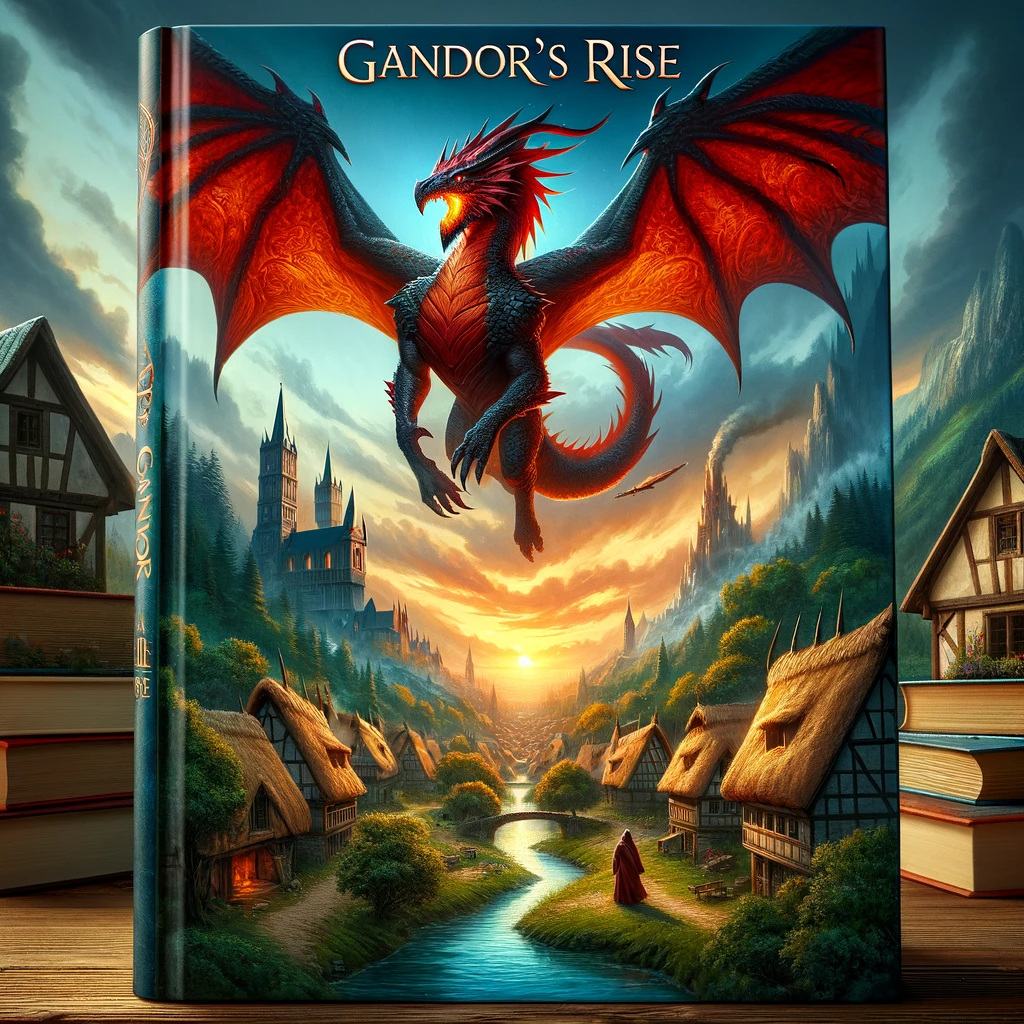
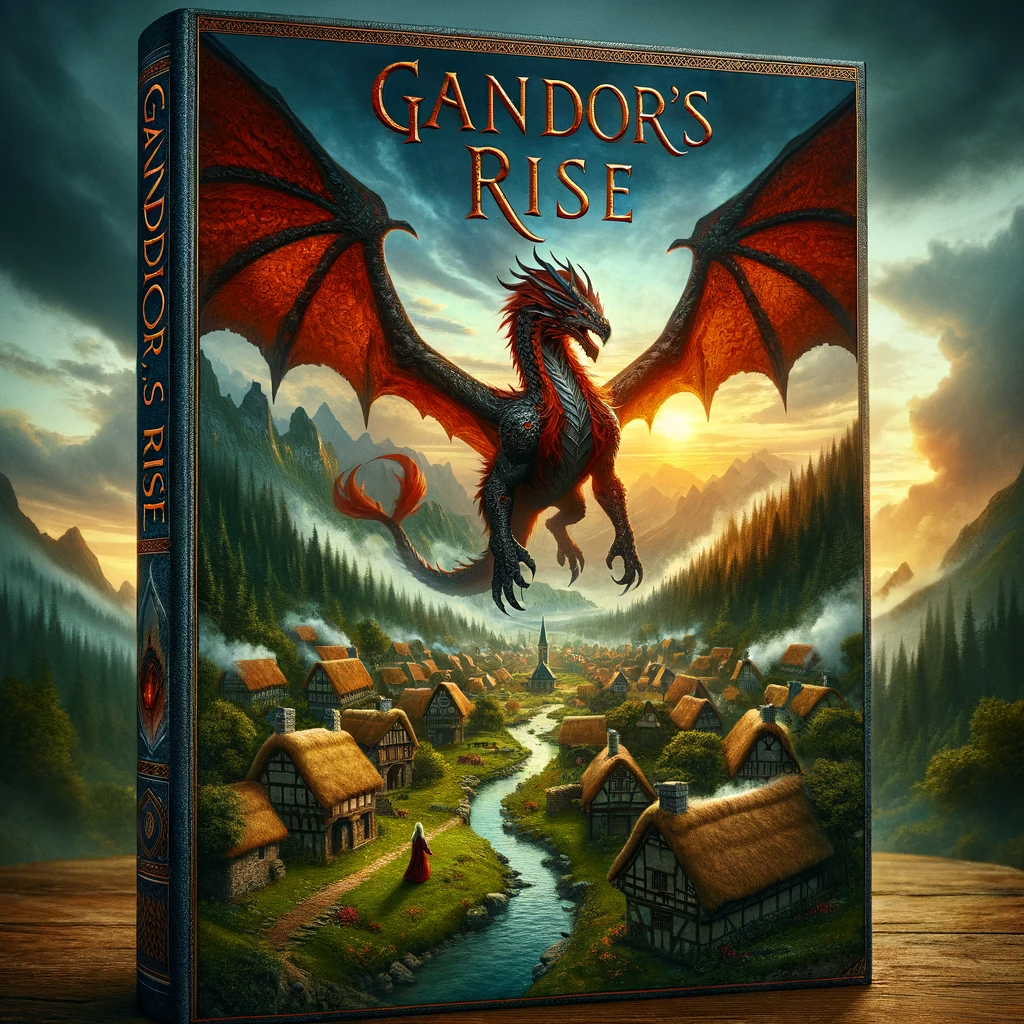
Here is what Midjourney came up with when given an identical prompt:
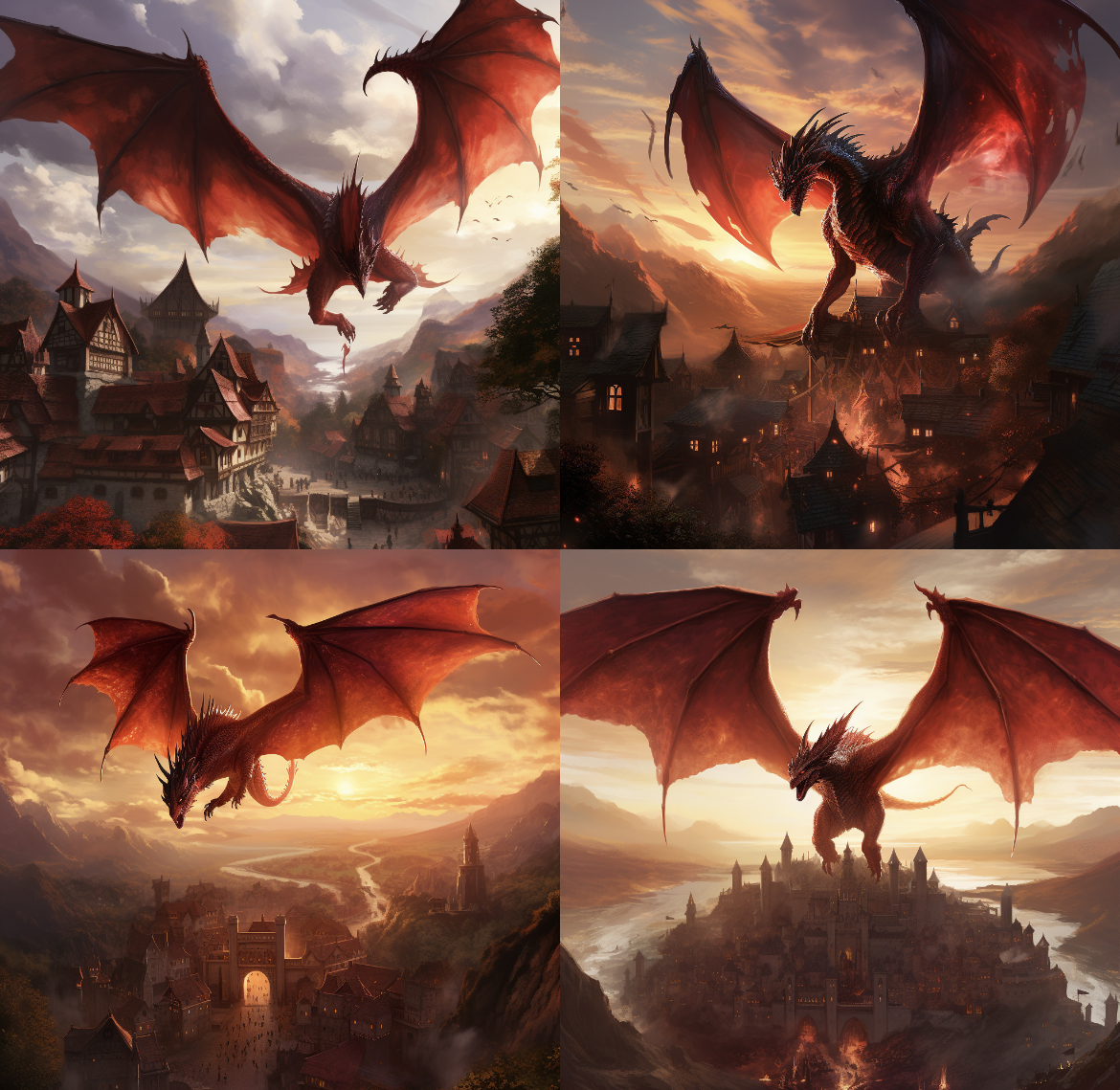
While these photos are highly detailed and impressive, DALL•E 3 has made a better book cover, hands down.
Midjourney did not attempt to generate the text and it did not create an actual book cover.
We hope you found this Step by Step Guide to Creating Book Covers With Midjourney helpful! Please look around the site for more helpful tips, tricks, and reviews on the latest generative AI Tools!
Here are some additional resources you might find helpful when considering which AI tools to use:
DALL•E 3 vs. Midjourney
Step by Step Guide to Creating Book Covers With DALL•E 3
